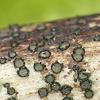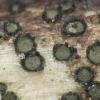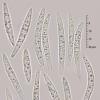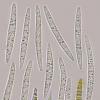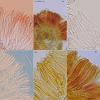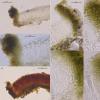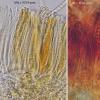
30-11-2025 12:53
 Edvin Johannesen
Edvin Johannesen
White short-stipitate apothecia found on thin twig

30-11-2025 10:47
 William Slosse
William Slosse
I recently found a collection of small Peziza sp.

27-11-2025 12:01
Thomas Læssøehttps://svampe.databasen.org/observations/10496727

27-11-2025 11:46
Thomas Læssøehttps://svampe.databasen.org/observations/10493918

17-09-2025 10:50
Heather MerryleesHi there!I am hoping for any advice on the identif

29-11-2025 08:40
 Andreas Millinger
Andreas Millinger
Hello,on a splintered part of a branch on the grou

28-11-2025 16:45
Nogueira HéctorNovember 23, 2025 Requejo de Sanabria (León) SPAI

25-11-2025 14:24
Thomas Læssøehttps://svampe.databasen.org/observations/10490522

27-11-2025 15:41
Thomas LæssøeSpores brownish, typically 4-celled; 26.8 x 2.4;

27-11-2025 11:31
Thomas LæssøeCollectors notes: Immersed ascomata, erumpent thro
Karstenia?
Enrique Rubio,
03-05-2019 21:38
What do you think?
This collection is from central Spain at 1000 m of altitude, april 6(2019).
Many thanks again
Hans-Otto Baral,
03-05-2019 21:56

Re : Karstenia?
Hi Enrique
With Karstenia I agree. It could be valuable to make a KOH-pretreatment and test in IKI or MLZ (both the same), you will get a blue hymenium (hemiamyloid, not dextrinoid!) and perhaps a small blue apical ring becomes visible under oil immersion, depending on the species. Dextrinoid would mean red in MLZ whereas your pic clearly shows no reaction in MLZ.
Zotto
With Karstenia I agree. It could be valuable to make a KOH-pretreatment and test in IKI or MLZ (both the same), you will get a blue hymenium (hemiamyloid, not dextrinoid!) and perhaps a small blue apical ring becomes visible under oil immersion, depending on the species. Dextrinoid would mean red in MLZ whereas your pic clearly shows no reaction in MLZ.
Zotto
Jason Karakehian,
03-05-2019 22:11
Re : Karstenia?
Hi Enrique, do you observe longitudinal wrinkles on the ascospores at all?
Enrique Rubio,
04-05-2019 01:18
Re : Karstenia?
No, Jason. I haven't observed any ornamentation on the spores.
Enrique Rubio,
04-05-2019 01:46
Hans-Otto Baral,
04-05-2019 08:37

Re : Karstenia?
Sorry, but your KOH pretreatment must have been very weak. I cannot imagine that an ostropalen fungus does not turn to an I-blue reaction even if exposed to 1-2% KOH for a few seconds only.
